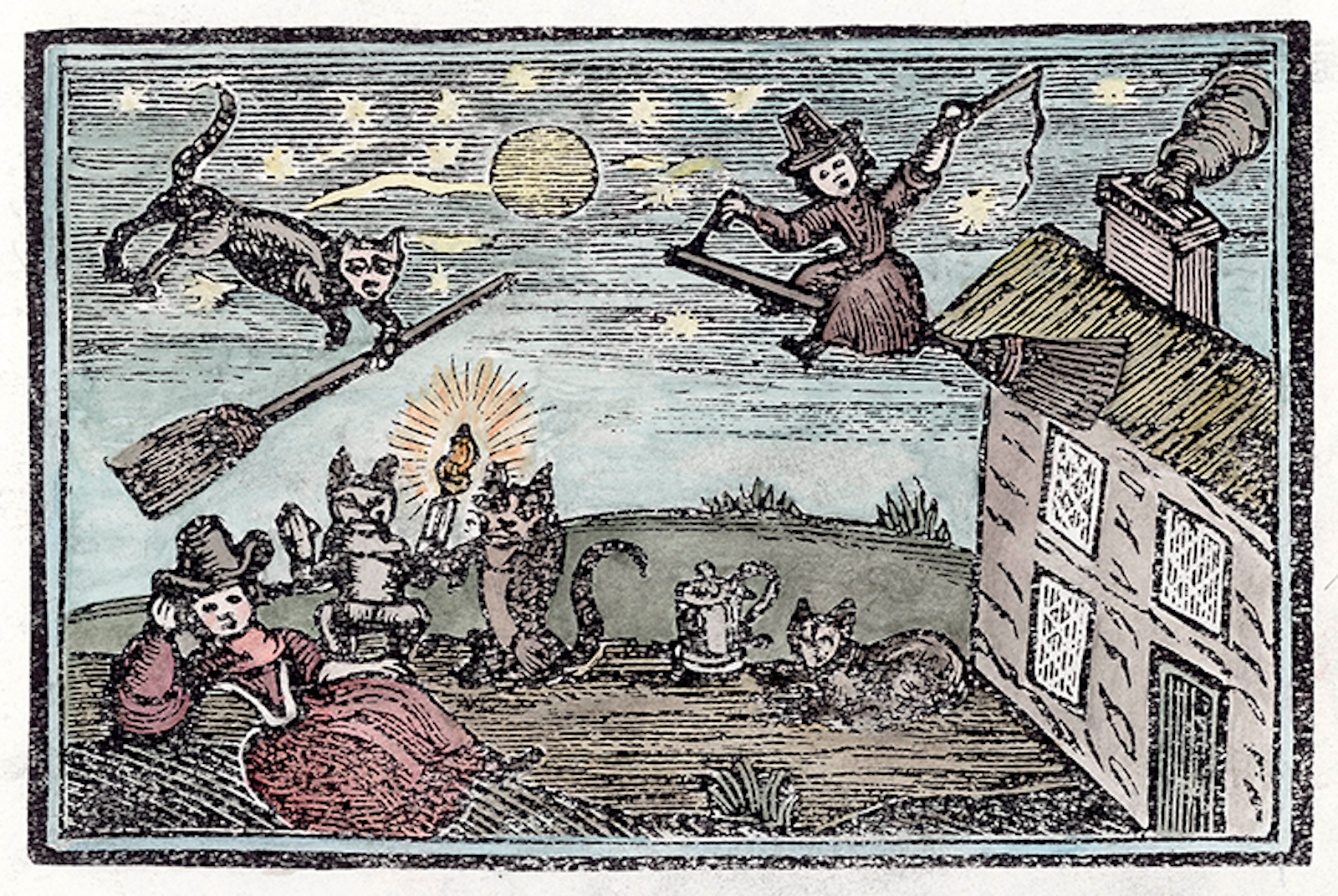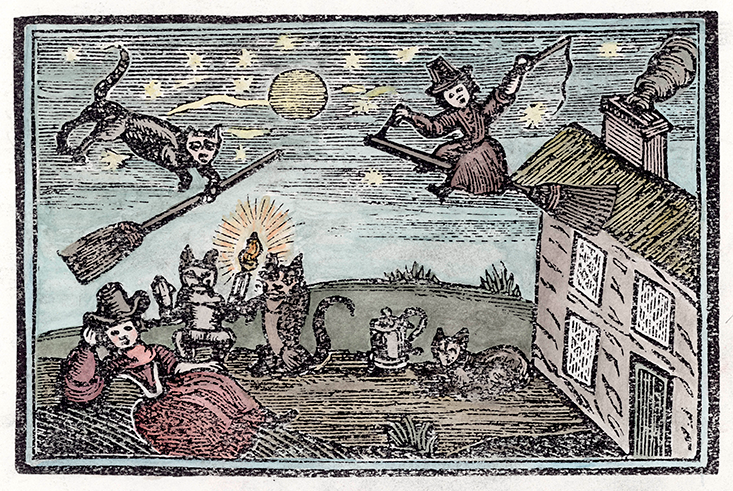
From the 12th century onward there were two distinct attitudes to cats. For many people the cat population operated as important rodent-controllers, and every so often a cat would go beyond being a mere working animal and become a welcome pet inside the house. Working cats and house cats were always popular, but now a negative attitude began to run alongside the friendly one. For some people, the cat was now seen as an evil animal, in league with the Devil. For them, the cat needed to be persecuted if Satan and his followers were to be defeated.
As early as 1180 the warning bells were sounding. The gullible were told—and believed—that during satanic rituals, “the Devil descends as a black cat before his devotees. The worshippers put out the light and draw near to the place where they saw their master. They feel after him and when they have found him they kiss him under the tail.”
In the following century Pope Gregory IX added his voice to the campaign against the evil cat. He was intent on stamping out a sect of Devil-worshippers in Germany who involved black cats in their rituals. This sect had taken its inspiration from the legend of the Nordic goddess of sexuality, Freya, written down in 1220. She was said to be drawn through the heavens by a pair of magnificent cats. Sometimes she was depicted in a chariot and sometimes she was shown riding on the back of one of the animals. The cats symbolized the twin qualities of their Scandinavian mistress, fecundity and ferocity. They were very loving until they were angered, when they became terrifyingly ferocious.
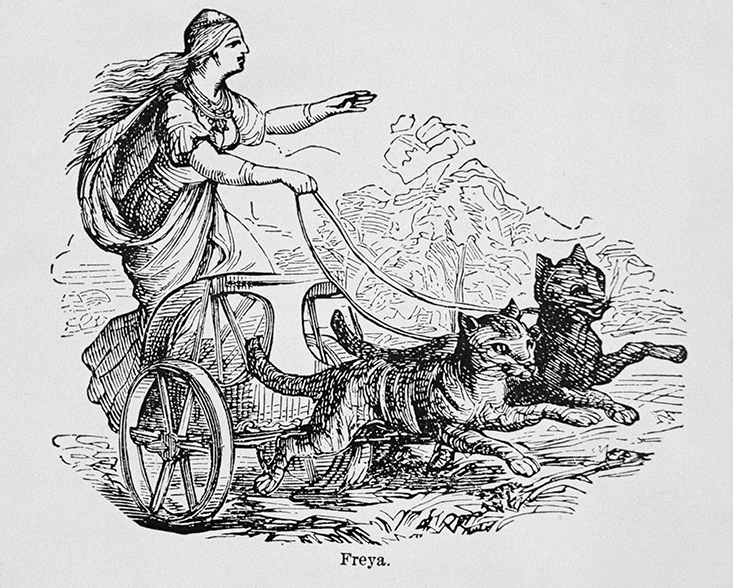
Freya wept golden tears as she roamed the night skies, and soon became the patroness of a witchcraft cult that involved trance-like states and orgiastic rites. This cult had taken a hold in Germany, and it was news from there that had alarmed the pontiff in Rome. He had been told that members of the sects that made up this satanic cult would gather for a ceremonial meal and, when the meal had ended, they would rise and a statue of a black cat would come to life, walking backward with its tail erect. First a new initiate and then the master of the sect would kiss the cat on its rump. A wild orgy would follow.
As many black cats as could be found were rounded up, put into sacks or large baskets hundreds at a time, and burned alive on bonfires.
How much of this is true is irrelevant. The fact is that people believed it, and an Inquisitor was sent to stamp out the practices of the cult, using torture to gain confessions. Clearly, as far as the Catholic Church was concerned, the cat was in bad company, and it was inevitable that it would come under attack, along with the Devil-worshippers themselves.
It was the pure-black cat that was the focus of the campaign. Cats of other colors were spared, and if a black cat had even the smallest patch of white hair somewhere on its body, it too was safe. A small patch of white fur was called an angel’s mark, and it is interesting that even today most black cats carry such a marking.
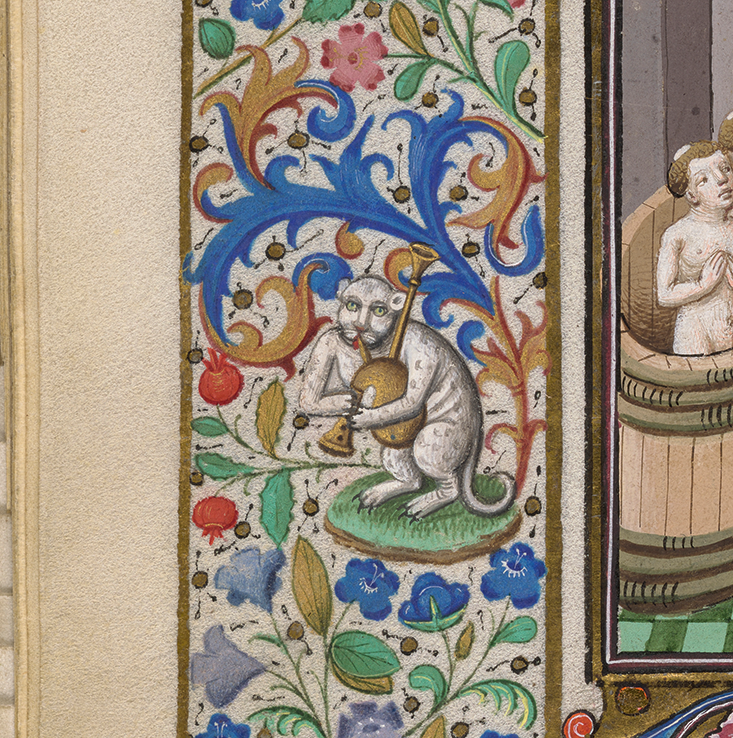
The attack on black cats spread all over Europe, and thousands were put to death by devout Christians who believed that the screams of the dying cats were in reality the cries of the Devil. The worst day of the year for black cats was June 24, the feast of St. John, when as many black cats as could be found were rounded up, put into sacks or large baskets hundreds at a time, and burned alive on bonfires. It was believed that on this day witches could turn themselves—by shape-shifting—into black cats to carry out evil deeds. So, to the faithful, it was witches who were suffering and being put to death, not the cats. This is why onlookers—even pious Christians—could stand laughing at the cruel spectacle of writhing bodies, listening to the hideous screaming of the burning cats and taking pleasure in it. They truly believed that they were witnessing a spectacle in which the Devil was being defeated.
Pope Innocent VIII demanded that, whenever a witch was burned, her pet cat was to be burned with her.
It goes without saying that if gangs were out rounding up cats to put into the sacks for these festivals, the men given this task would not be too concerned about the color of the cats they were catching. Just as all cats are gray in the dark, so all cats are black in the sack. As a result, all cats were at risk on such occasions. The feline population as a whole was under threat.
In some places, cruelty to cats became an accepted social event without any special religious link. In the city of Ypres in Belgium, for example, it became a popular custom to throw live cats from the top of the belfry tower of the Cloth Hall once a year. In years when the city had been prosperous, only a few cats were thrown; in bad years the number was increased, presumably because it was thought the Devil had been at work and his feline familiars must be dealt with more firmly as a punishment. The earliest descriptions of this cat-throwing have been found in the city chronicles for the years 1410–20, but it may have been taking place even earlier. It continued annually until 1817, when the final throwing took place. An eyewitness reported that the very last live cat to be thrown somehow managed to survive the fall and was seen scampering to safety. After that the custom died out, and the idea was not revived until the 20th century, when it became a great cat parade and carnival with no cruelty involved. The cats that are thrown now are toy ones, to be caught by children standing below. In the 21st century the parade—called the Kattenstoet—continues, but it is staged only once every three years.
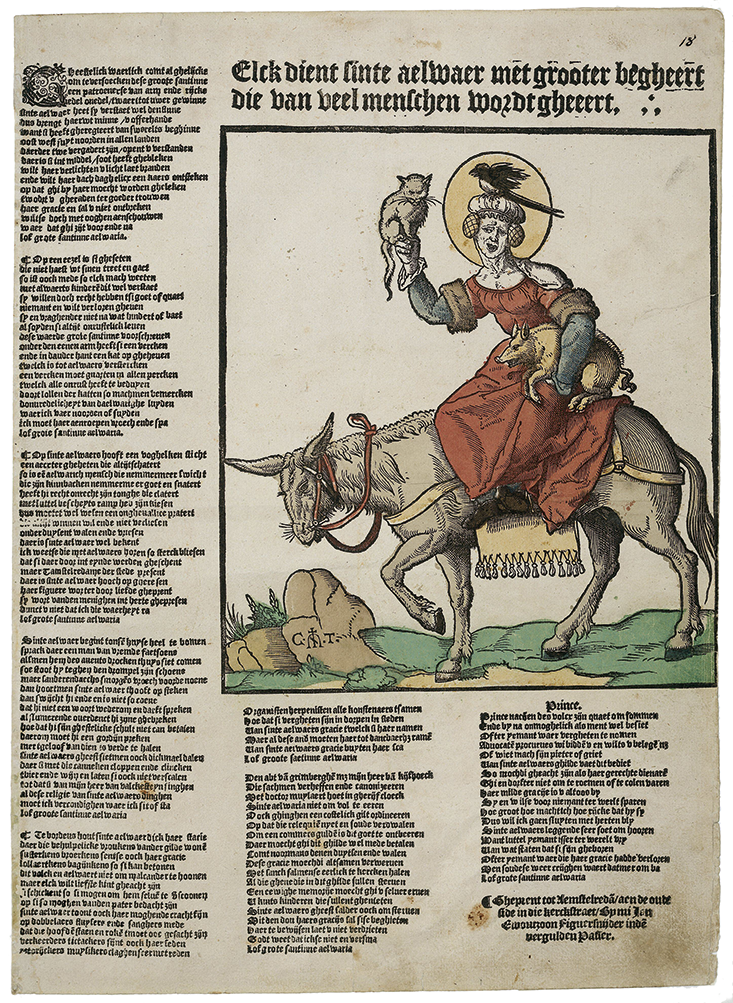
In 16th-century Holland an evil cat appeared in the company of a curious anti-saint known as “Saint” Aelwaer. A satirical image meant to display attributes that were the exact opposite of the qualities of the Virgin Mary, she was described as a “demonic patroness of all tribulation.” In a Dutch woodcut of 1550 she is portrayed riding a donkey, with a magpie on her head symbolizing immorality, a pig under her left arm symbolizing gluttony, and a cat held aloft on her right hand symbolizing the forces of evil. The cat is held high, like an emblem or ensign that is clearly meant to advertise the fact that this figure is in league with the Devil.
This widely diffused negative attitude to the cat heralded a period of about three centuries of brutal feline persecution, in which cats all over Europe were tortured and killed. Much of it was focused on witchcraft. The witch-hunting craze rose to a frenzy between 1580 and 1630, spreading rapidly and leading to the execution of as many as 60,000 unfortunate women. It took the form of a kind of moral panic, with the victims being portrayed as arch-enemies of the Christian Church. They were said to be Satanists, who worshipped the Devil and engaged in unspeakable pagan rituals. In reality, most were no more than eccentric old women who lived alone and whose only companions were their cats. They were despised by superstitious villagers, who feared being cursed by them. Socially speaking, their executions served to rid local communities of awkward eccentrics who refused to join in with normal village activities. For the Church, they added a valuable fear factor that helped to stop people from straying from strict religious practices.
Toward the end of the 15th century Pope Innocent VIII issued a decree that put the Vatican’s official stamp, yet again, on cat hatred, declaring it to be an unholy creature. He demanded that, whenever a witch was burned, her pet cat (if she had one) was to be burned with her. Worse than that, some witch-finders insisted that anyone owning a cat must automatically be a witch. For even the most ardent cat-lover, this was too much. When asked whether the pleasures of owning a cat could outweigh the nightmare of being burned alive, there was only one answer. As a result, the population of household cats began to decline rapidly.
When cat populations were decimated in this way, rats and mice flourished, and when flea-infested rats brought widespread epidemics to Europe it was seen by some as a case of the cats getting their revenge for the horrors to which they had been subjected. As one writer put it, if the murdered cats had ghosts they would have enjoyed a vindictive satisfaction in watching the mass suffering of the human population.
Desmond Morris is a world-renowned zoologist and television presenter, and the author of many bestselling books on human and animal behavior.
Reprinted with permission from Cats in Art by Desmond Morris, published by Reaktion Books Ltd. ©2017 by Desmond Morris. All rights reserved.















